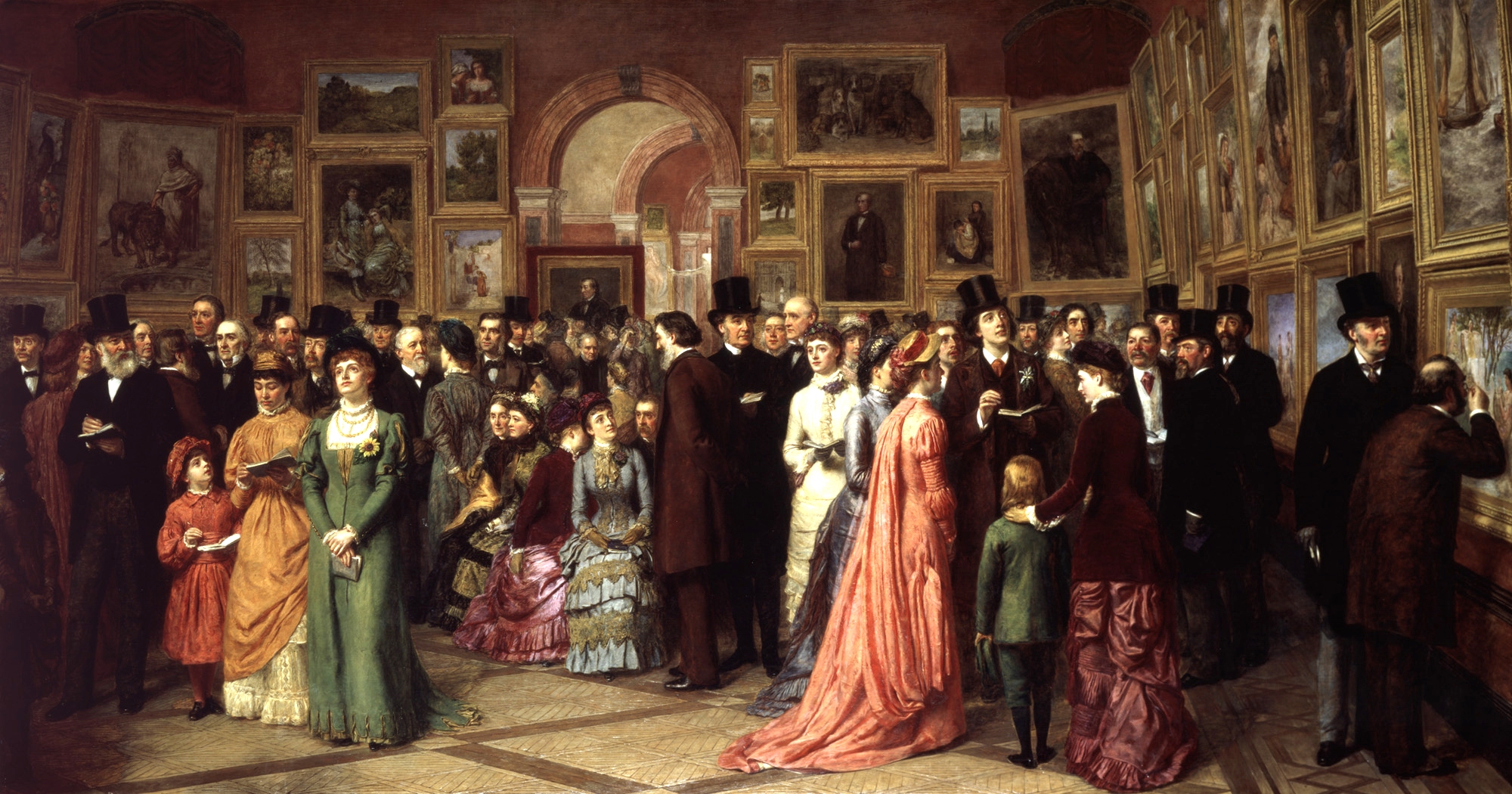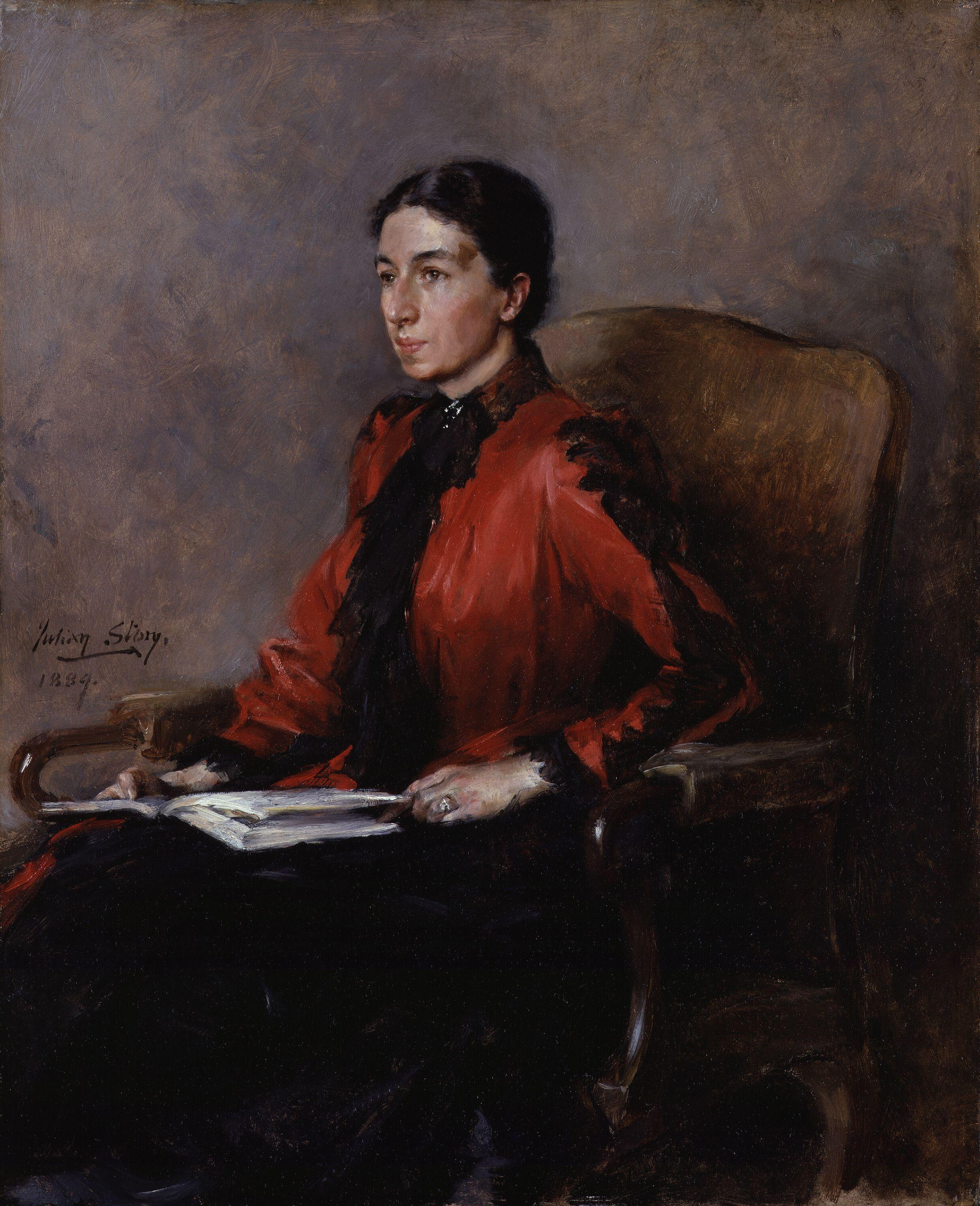More Of The Cello Mystery Solved
—Corroborating Research—
In a recent article I established the literary source for the cello coat worn by Oscar Wilde at the Grosvenor Gallery. However, I left it open to interpretation whether Wilde actually did have such a coat tailored or, perhaps, he just happened to have one like it. After all, ask you may recall, there was only one report of the “cello” shape.
However, we can now be definitive.
Further research allows us to make the coat story complete—although, as we shall see, the archaic variant word compleat might make for a better fit.
The Portrait of Mrs H. W.
Previously we had seen how Mrs Humphry Ward in her diary painted a picture of Oscar’s coat in the shape of a cello. And while it remains true that hers is the only description of the coat specifically in a “cello” shape, it turns out that she was not the only person to have noted Wilde at the Grosvenor, and other galleries, wearing a specially stylized coat of his own design.
The key to finding these corroborating references lies in the timing of the occasion, and, again, Ellmann is responsible for initially misleading us. The problem is with the year 1877.
Ellmann takes the common idea that Wilde wore the coat at the opening of the Grosvenor Gallery but interprets it as the inauguration of the gallery in 1877—an idea he reinforces by referring to it as Oscar’s “London debut”. This is a persuasive assumption given that Wilde was actually present at that 1877 event, but he was there only as a rusticated Oxford undergraduate to write a review for a college magazine. We recall that 1877 was three years before Polish actress Helen Mojeska famously expressed ignorance about who he was, and what he had done, and so it was too early for ladies in fashionable society to be recording “the latest story” about him. The reality is that Wilde did not effectively come down from Oxford to London until early 1879 and his “dress” period was much later.
But what really makes the Ellmann date of 1877 suspicious is that Mrs Humphry Ward’s diary (Ellmann’s source for the story) is a record of the 1880s—according to the editor’s note the diary begins only in 1879. Further, the diary does not actually mention the inauguration: it merely refers to the occasion as a Private Viewing of which there were many. In fact, there was an “opening” of the gallery’s annual exhibition every year. Finally, while the published diary is arranged thematically, it is arranged within its themes chronologically, and the coat story is noted after the events of 1884.
So if not 1877—when exactly?
By examining the record we can eliminate many years of the 1880s when either Wilde or Mrs H. W. could not, or did not, attend the Grosvenor Gallery; indeed it necessarily makes sense to focus on the opportunities they had of attending together. From research it becomes clear that the occasion could not have been before 1885 nor after 1887. I will not detail the process of elimination here, because the following newspaper reports sufficiently identify the year.
1885 and all that
1885 was a central year in Wilde’s advocacy of dress reform.
Oscar had begun to express an interest in dress during his lecture tour of America in 1882, and as I wrote in my book On Dress.1
Wilde’s subject matter was becoming increasingly practical, increasingly interior, and increasingly individual. It was as if he was turning the telescope around for a narrower view, one that would eventually focus on dress.
During the American tour Wilde requested only one book concerned with dress for use as reference material: The Art of Dress by Mary Eliza Haweis. From that book the following is suggestive:2
In October 1884 Wilde gave his first lecture on “Dress” and by 1885 he had written his (recently discovered ) essay The Philosophy of Dress which he sent to the New York Tribune—where it was printed in April of that year.
Coat Tales
Meanwhile, Wilde was busy lecturing on the subject of dress across the UK and Ireland. When he reached Dorchester, in February, he might have telegraphed his intentions when he told the audience (to some laughter) that, “a man’s coat was a garment that had a back but no front, and a waistcoat had a front but no back.” He concluded by suggesting the two should be amalgamated.3
Not surprisingly, clothes became a recurring Wildean theme in the press, particularly his preoccupation with coats.4
This was appropriate as it was around this time that Wilde would have had the coat made. It is possible that he did this in preparation for the London Art Season beginning in the last week of April, when private viewings and public openings occurred at all the famous galleries.
It is apparent that Wilde wore the coat at more than one of these events. For instance, the Northern Echo reported Wilde at the Private Viewing of the Royal Academy on Friday, May 1 in “his brown frock coat, designed by himself”.5
So we conclude that Oscar Wilde’s cello coat debuted in the Spring of 1885.
Welcome to the Fold
Reports soon gave a clue as to how the fit of the coat had been produced. We see from this parody that the shape was achieved by inserting pleats into the back of the coat.
Other journals seized upon the opportunity to continue the ridicule of Wilde. In the magazine Truth, the regular contributor “Madge” in her Girl’s Gossip column told her followers:
We have just got back from the Private View at the Galleries of the British Artists in Suffolk-street, where we were much interested by the crowd of people assembled…We fell anew into ecstasies over Mr. Oscar Wilde’s coat, with its marvellous pleats at the back.”6 7
Later that year a satirical cartoon sheet, “Funny Folks“, took inspiration from the article in Truth to aim an admirably comic verse at Wilde entitled “The Consolation in a Coat“:8
Final Movement
It had to end.
By the 1888 season, when Oscar putatively gave up the life of a dandy for the steady job of editing Woman’s World, he also abandoned the cello.
An account of the Private Viewing at the New Gallery that year informed us: “Mr. and Mrs. Oscar Wilde were to the fore; but what a different Oscar it is! No more long hair, no more strangely-cut coats, no more lilies, no more fantastic neckties. Oscar is an ordinary mortal, and he is a clever man and an agreeable companion.”9
Perhaps the cello coat was not Oscar’s finest moment. So let us give the last word this time to Wilde’s most caustic critic at the galleries, with a remark we can now better appreciate. I refer to the artist Whistler when he said, “Oscar —the amiable, irresponsible, esurient Oscar—with no more sense of a picture than the fit of a coat.”10
© John Cooper, 2018.
Footnotes:
- Oscar Wilde On Dress, John Cooper, CSM Press, 2013. Contains a detailed analysis of Wilde’s many dress influences, and Wilde’s essay The Philosophy of Dress in book form for the first time. ↩︎
- Haweis (Mrs. H. R.), The Art of Dress. Illustrated. 1879. London. Chatto & Windus. ↩︎
- The Bridport News, February 27, 1885, 3. ↩︎
- Examples passim include:
—West Somerset Free Press, February 7,1885
—Sheffield Independent, February 7,1885
—The Manchester Courier and Lancashire General Advertiser, May 9, 1885 ↩︎ - ‘Our London Letter’ Northern Echo, May 2, 1885. Re: “brown”: cf. Mrs Humphry Ward’s description of “bronze”. ↩︎
- Truth, December 3, 1885. ↩︎
- “Madge” was C.E. Humphry, (Charlotte Eliza, née Graham). ↩︎
- Reprinted in the Luton Times and Bedfordshire Advertiser, December 18, 1885, 9. ↩︎
- “English Gossip”, London, May 11. Sydney Morning Herald, June 16, 1888, 6. ↩︎
- Whistler on the fit of a coat: ↩︎






Just been enjoying reading this on Facebook. Thank you, John.
Vanessa
>
LikeLiked by 1 person
Dear John Wonderfully informative and entertaining. (And thanks for the name-check.) Am sure you are right that the Whistler quote alludes to This coat.
The UCL Special Collections turn out to be housed at Kew, along with the National Archive. Rather a long trek. I will get there, but am not sure when. So the final footnote may have to wait a while….
All best wishes Matthew
Sent from my iPad
>
LikeLiked by 1 person
Your research, deductions and conclusions took me from a fashionable fascination about a cello coat to being totally enthralled! I love your process for uncovering such mysteries.
LikeLike
A fine piece of research. But I am intrigued by the coat OW wears in the Pennington portrait which is also distinctive, with its flared profile and velvet collar. This was gifted in 1884 but is said to date to 1881. Although Wilde starting writing about dress in the late 80s, I think he realized its potential much earlier.
LikeLike
Hi Anne: Thank you for your reply and kind words. Just a couple of clarifications about dates.
1) I have my doubts about date of creation, and the date of the gift, for the Pennington portrait. I suspect both were later, possibly 1885. I am presently researching this.
2) But Wilde’s interest and writing about dress was, indeed, earlier than the late 80s. As I referenced in the piece, he began speaking about dress in 1882, and exclusively about it in 1884 which led to letters to the Pall Mall Gazette later that year and a full essay in 1885.
LikeLike
Have you seen my letter in the Wildean re Frith requesting OW’s brown coat for the Private View ?
LikeLike
Just read it yesterday!—my copy of The Wildean arrives a little later in the US.
And I had you on my list of Oscaring to follow-up on.
First to let you know how much I enjoyed your original article—a most definitive piece of research. And, second, to inform/remind you that there are TWO fur coats in the Sarony pictures, not just one. One may be the same as in the Elliott and Fry picture (1881) but the other is certainly not. Why there are two is a bit of a mystery…
LikeLike
Celebrating Wilde tomorrow…wish me luck! I am the after lunch lecture…Wilde and du Maurier. Just finishing a paper for the Frith catalogue (2019) so brown coats are on my mind. Following up the claim that brown frock coats are aesthetic. Leighton seems to prefer them too.
LikeLiked by 1 person
Congratulations for a fantastic piece of research. I was just wondering if you have a hypothesis about the identity of this fabric which sometimes looks bronze and sometimes red. Mrs. Humphry Ward’s comment immediately made me think of Solaro, or perhaps that tonic material that skinheads used to wear in the seventies. Just a thought.
LikeLike
Hi José—thank you for your kind words.
I am no expert on men’s dress materials of the 19th century, and I don;’t know Solaro. Alexander McQueen has an Oscar Wilde range of clothing with a coat made from wool doeskin?
https://www.alexandermcqueen.com/experience/us/the-style-of-oscar-wilde/
LikeLike